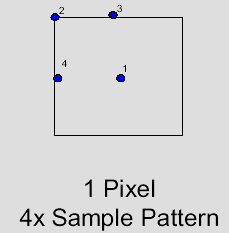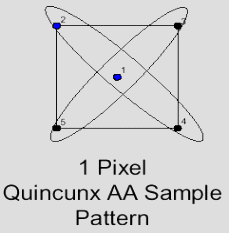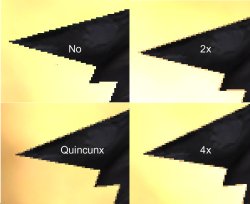 |
|
|
|
In the Forums... |
Posted: February 27, 2001 Written by: Dan "Tweak Monkey" Kennedy Read more about the nfiniteFX engine in our programmable pixel/vertex shaders article Programmable Pixel Shader What is a programmable pixel shader? Imagine being able to do all those neat lighting effects you see in a game's intro animation, completely on the GPU. Here are some of the features of Nvidia's programmable pixel shader:
HRAA - High-Resolution Anti-Aliasing Nvidia has greatly improved their FSAA techniques. Now dubbed "HRAA" for high-resolution anti-aliasing, Nvidia implies that their anti-aliasing techniques combined with the GeForce 3 will result in acceptable performance at high resolutions, namely 1024x768x32bpp and up. Nvidia also took the time to develop a new anti-aliasing technique, called "Quincunx" (named after that 5 point pattern on a gaming die). Why they decided to use this name is beyond me, but alas, the concept is cool. Unlike 2x or 4x supersampling (resizing the screen by 2x in the horizontal and/or vertical direction), Quincunx is a multisampling anti-aliasing technique. It doesn't enlarge the screen by any means. Instead, it takes a single pixel, and analyzes the four pixels at each corner (creating a 5 dot die pattern). Then it adjusts the color of the neighboring pixels to make a jagged edge less noticeable to the human eye. The result (at least, according to Nvidia) is nearly 4x FSAA visuals with only a 2x FSAA performance hit, because Quincunx takes considerably less memory than 4x FSAA.  
The visual difference, from what I've seen, seems slightly better than 2x, but it's hard to say just how good it is. I will have to try it on some flight sims or racing games before I make a judgement. Here's a pic showing an example of the HRAAs in action:  This isn't the best example, but the Quincunx looks pretty good! |
||
|
| |||
|---|---|---|---|